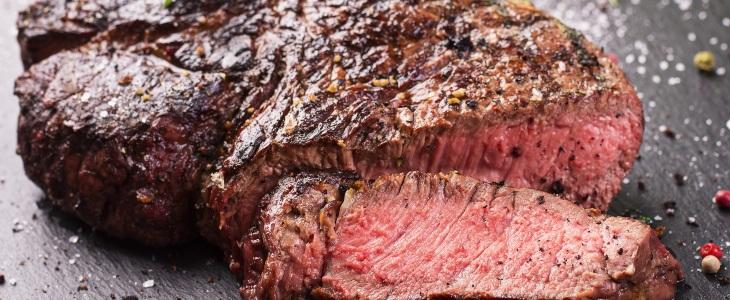How to cook rib eye steak
The perfect rib eye steak truly a thing of beauty, and it’s easy to see why so many butchers and professional chefs take such personal pride in preparing one. It’s a delicious meat with a very characteristic flavour, and it’s the centrepiece for a whole host of amazing recipes. And when you’ve got access to the very best butchers equipment and you’re familiar with the basics of how to prepare one, you’ve already got all the essential building blocks for creating your very own masterpiece.

What is a rib eye steak?
Rib eye steaks are so named because they’re cut from the ‘eye’ (centre) of the cow’s fore rib. This is a lightly worked rib section, which makes the meat very tender. A good rib eye steak is generally at least an inch thick, dry aged, and with a good marbling of fat running through the meat. It’s this fat that gives the steak a lot of its characteristic flavour, coming through both the steak itself, as well as the surrounding tissue.Rib eye steaks are best when cooked a little longer than other steaks, usually at least medium or rare medium. This provides enough time for the fat to melt, allowing the meat to marinade in its own juices for a while. By absorbing the fat, it keeps it succulent and tender while giving it lots of flavour.
How to cook a rib eye steak
There are several ways you can choose to cook a rib eye steak, ranging from grilling and broiling it to pan frying it. However, the amount of fat present in the meat means that grilling or broiling it can usually end up with a lot of spattering of oil. Some people choose to use a BBQ grill, but then you’ve got similar problems in that the flames and heat will have a noticeable impact on the fat content and ultimate flavour.So, we recommend pan frying it instead, which allows the steak to marble in its own juices for a while like we described above. This is why so many people choose to use a cash iron frying pan.

Preparing your steak and pan
Generally, you shouldn’t need to use too much oil, but if you’re set on it then we’d recommend Yorkshire rapeseed oil. This has a high smoking point and a high burn point, so you can use it to get a good crust on your steak without worrying too much about having to deal with sudden bursts of flame.Before you put your steak down on the pan, you’ll want to make sure that it’s well seasoned with sea salt. Don’t forget to make sure that it’s dry on the outside, too.
Finally, before you put your steak down you’ll need to ensure that your pan is properly hot. Carefully lower your hand until it’s reasonably close to the pan. If it’s only warm, it’s not yet there. It should be just about too uncomfortable to bear, which is when you know it’s ready.Cooking your steak
Once you’ve put your steak onto the pan, it needs to be left for at least a few minutes at a time before you turn it. It’s worth resisting the temptation to move the pan around too much as you do it - let the steak do its thing! Perhaps the most important thing is to have patience, because as we mentioned above rib eye steak tends to cook more slowly than other types of meat. If it’s going to cook and render the fat properly, it will need about six to eight minutes in total. The exact timings will depend on how well done you’d like it:- Rare: 2 to 2 and a half minutes per side
- Medium: 3 to 4 minutes per side
- Well done: 5 to 6 minutes per side




